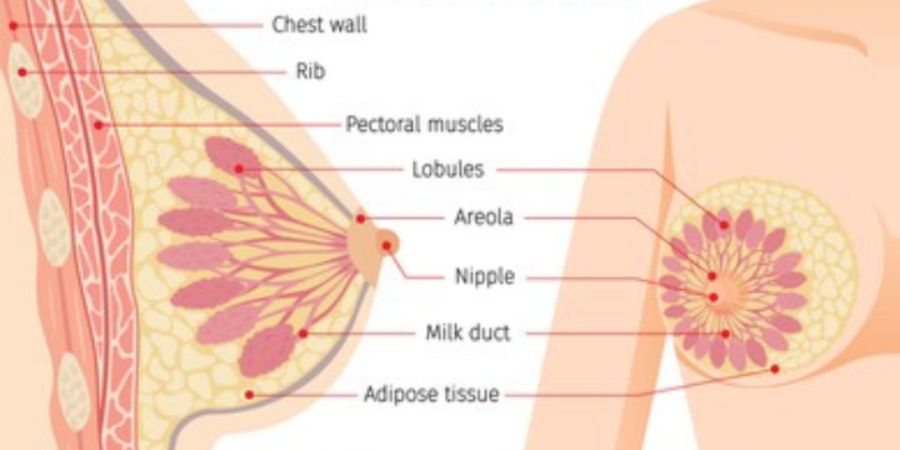

The mammary (or milk)glands are modified sweat glands. These glands are present both in males and females. But in males, they persist only in a rudimentary state, whereas in females at puberty, they enlarge in the form of a pair of breasts. Each breast carries a central conical projection called nipple. 15-20 milk duct open on the nipple. Each milk duct is continued inward in a branching manner to join a cluster of 15 to 20 lobes of mammary glands. The activity of mammary glands. The activity of the mammary glands is related to reproductive harmones (prolactin ) and pregnancy. The milk secreted by the mammary gland is highly nutritious for the new-born baby.
MEIBOMIAN GLAND:
These are modifie sebaceous glands which open on the margin of the eyelids. Their secretion is oily and serves to lubricate the margins of the lids and to prevent the overflow of tears.
CERUMINOUS GLANDS :
These are modified sebaceous glands found in the auditory canal and secrete wax like substance called cerumen or earwax which lubricates and protects the delicate eardrum from the dust particles and germs.
SKIN AND HEAT REGULATION OF BODY
All mammal including humans are warm blooded (endothermal :body heat generated from inside); so are the birds. They all maintain a more or less constant body temperature even if it is a very cold or very hot outside.
The body temperature of cold-blooded (ectothermal) organisms fluctuates with the environmental temperature. This means that they must somehow escape both conditions of too hot or too cold environment and thus they hibernate (winter sleep) or aestivate (summer sleep) as in case of frogs.
Human body temperature is usually about 37°C (in the month) , it is about 1°C higher in the rectum and about 1°C lower in the arms pits.
● Our body temperature may also show variations of 0.3°C to 0.5°C in the course of 24 hours. It is lowest in the early morning and the highest in the late afternoon.
● Rise in body temperature above normal means fever and sickness and similarly, a fall in temperature may be dangerous. A suitable (optium) temperature of 35°C-40°C is essential for normal body activities, especially for the action of enzymes. The working of enzymes is slowed down with the lowering of temperature, while higher temperatures destroy the enzymes altogether .
Heat production:
There are many sources of heat production in our body.
● Chemical reactions occurring in all body cells, especially in the liver by the oxidation of glucose, generally produce heat.
● Most of the heat produced in our body comes from the activity of our muscles. Vigorous activity makes you warm on a cold day and over heat you on a hot day.
● A small amount of heat comes from the ingestion of hot foods and beverages.


